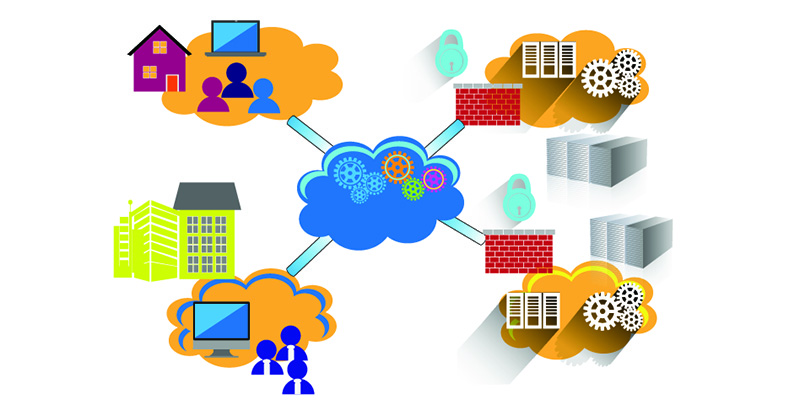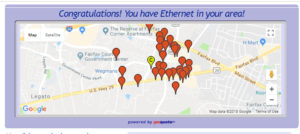
14 Jun Business Ethernet Services: Questions to Ask Before Leasing
As demand for cost-effective and higher bandwidth connectivity services continue to increase, more enterprises are migrating from legacy services such as 155 Mbps STM-1/OC-3 circuits to Business Ethernet Services. Because of its lower cost/bit, ubiquity, and familiarity, the industry has pushed Ethernet from its original LAN applications to carrier grade Wide Area Networking (WAN) applications. Moreover, Ethernet standards have evolved from 10Mbps in the 80’s to 400Gbps recently, enabling adequate bandwidth for all applications.
Business Ethernet Services are a set of WAN solutions enabling enterprises to connect their sites together to form secure networks. Carriers have taken advantage of their long-distance networks to connect geographically dispersed client sites with Ethernet services. To rapidly make Ethernet services easily accessible, operators have also taken advantage of their available access networks to deploy Ethernet over T1/E1, Packet Microwave, Wi-Max, Hybrid Fiber Coaxial (HFC), Digital Subscriber Line (DSL), Passive Optical Network (PON), Active Fiber and other access technologies.
Business Ethernet Services are being used for the following applications:
- Dedicated Internet Access
- Data Center Inter-Connection/Server Consolidation
- Remote Site Connectivity to Data Centers
- Data and Video Distribution
- Mobile Backhaul
- Financial Institutions Applications
- Internet Exchange Points(IXPs)/IP Peering
- Educational Institutions/National Education and Research Networks (NRENs)
- Government/Military Applications
But shopping for a Business Ethernet Service that meets a business’s technical requirements and budget can be a daunting task. The combination of service types, technical specification for each type, number of providers and multiple plans from each provider complicates the service selection process. It is important that IT managers can ask some of the most basic questions to get the correct service at a fair price. We have put together several questions to help with the service selection process.
Is there Ethernet access in the buildings to be connected? | Are there Ethernet Points of Presents (EPoPs) nearby?

Before you can settle for Business Ethernet as your WAN solution, you have to find out if it is available where you need connectivity. The buildings you wish to connect may or may not have access to Ethernet. If Ethernet services are not already accessible from the buildings you want to connect, the next option is to connect your building to a nearby building with access or the nearest EPoP.
Carrier Ethernet Services Locator helps you determine if a building is already connected to Carrier Ethernet or whether other nearby buildings have access to the service. Point your browser to https://fiberguide.net/carrier-ethernet-services-locator/, enter the information required and discover Carrier Ethernet Access locations near you.
What speed does the User Network Interface (UNI) support?

The UNI, a standard Ethernet interface, is the customer equipment provided to the client by the Business Ethernet Service provider. It provides the demarcation point between the subscriber equipment and service provider’s carrier Ethernet network.
While Ethernet UNI devices come with many functions, one of the most important attribute for the subscriber is the speed supported by the device. Most common UNI customer interfaces supported by current commercial devices include one or more of the standards listed below. If you are planning to lease a low speed service on day one and wish to upgrade to a higher speed in future, it is advisable to get a UNI with interfaces compliant with all the speeds of interest.
10/100Base-TX:
A 100Mbps physical interface using two pairs of Category 5 (or better) copper and can be auto sensed to support the lower speed of 10Mbps.
10/100/1000Base-TX:
A 1Gbps physical interface using two pairs of Category 6 (or better) copper and can be auto sensed to support the lower speeds of 10Mbps and 100Mbps.
1000Base-SX:
A 1Gbps physical interface using multimode optical fiber.
10GBASE-SR (“Short Range”)
A 10Gbps physical interface using multimode optical fiber.
10GBASE-LR (“Long Range”)
A 10Gbps physical interface using single mode optical fiber.
100GBASE-SR4 (“Short Range”)
A 100Gbps physical interface using 4 wavelengths in multimode optical fiber.
100GBASE-LR (“Long Range”)<b r>A 100Gbps physical interface using 4 wavelengths in single mode optical fiber.
Does the Business Ethernet Service provider offer a CIR?
The Committed Information Rate (CIR) is the bandwidth that your business Ethernet provider commits to delivering to you at any given time. If the CIR is 20Mb/s for example, then your bandwidth should never fall below 20Mbps. Your rate may go over the CIR up to an excess information rate (EIR). The provider guarantees that you will get the CIR and sometimes the EIR provided there is no network congestion.
What is the uptime guarantee?
When leasing a Business Ethernet Service to connect your sites for mission critical applications, you expect high network reliability. The network service should always be there when you need it. Business Ethernet Service providers offer services that come with uptime guarantees.
Uptime is a measure of the time the network is operational as opposed to downtime when the network is not functioning. Uptimes can range from 99.5% to 99.999% (the so called 5 nines) but typical providers offer services with 99.9% to 99.99% uptime. While the difference might look trivial, these uptimes translate to 9 hours of downtime per year for 99.9% and 1 hour of downtime per year for the 99.99% uptime. For some applications such a difference is a big deal.
Does the UNI support multiple EVCs?
Carrier Ethernet services operate over Ethernet Virtual Connections (EVCs). An EVC connects two or more UNIs and restricts information flow only to UNIs within the EVC. UNIs can support one or more EVC with each EVC defined for a different application. For example, an enterprise may require an EVC for a carrier class virtual private line, one for VoIP and another for “best effort” Internet access.
Suppose your original goal is the provisioning of one service over a single EVC but anticipate multiplexing additional services in future, then you should ensure that the UNI supports multiple EVCs. Otherwise you will have to replace the UNI or use multiple UNIs for different services when additional services are needed.
Does the Business Ethernet Provider offer International VPLS?
If you are a multinational company, an International development organization or any other entity operating in different countries or even continents, you can take advantage of Ethernet VPLS to connect your geographically dispersed sites.
Virtual Private LAN Service (VPLS) is an Ethernet based Virtual Private Network service that can connect sites scattered across the globe. When you implement VPLS, all your sites appear to be connected by the same LAN although tens of thousands of kilometers may separate them. Several Business Ethernet providers with an international footprint offer International VPLS.
Is the Service MEF CE 2.0 Certified?
Carrier Ethernet providers are expected to be certified for compliance to the Metro Ethernet Forum (MEF) technical specifications. MEF maintains a Services Certification Registry of all providers whose services are certified.
How much does it cost?
There are too many variables that can affect the cost of Business Ethernet Services. They include the usual market dynamics (supply and demand), service features, distance between sites, brand, and other factors. A 10GbE service within New York City will be significantly cheaper than a similar service in Nairobi, Kenya. A 10GbE connection from New York to London costs about $3,500/month while the same service from London to Johannesburg (South Africa) will cost you ten times more at about $35,000 per month.
There are usually two components of the cost: the loop (or access) cost and the port (or service cost). If you access the business Ethernet services through a separate access operator, then you pay the access cost in addition to the cost of the service. For example, if your building uses the Time Warner Cable network to access Megapath Ethernet services, then you get charged for the Time Warner access and the Megapath service potions of the total cost.
FiberGuide offers free support to Business Ethernet shoppers by providing pricing proposals from two or more Ethernet providers. Follow the steps below to request pricing information through our business Internet quotation service.
- Point your browser to our business Internet quotation form
- Submit your request and a product specialist will contact you to discuss your requirements before providing you with multiple proposals.
Founder and Technical Director at FiberGuide, Lecturer, Scientist and Engineer. Passionate about optical networking and information and communication technologies. Connect with me on Linkedin – https://www.linkedin.com/in/jabulani-dhliwayo-1570b5b


Sorry, the comment form is closed at this time.